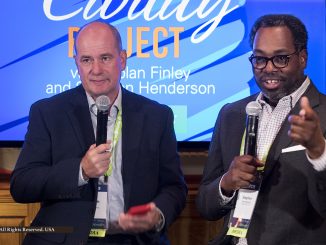
From the Editor—
When I first started writing for ink-on-newsprint, serious outlets didn’t run press releases.
At best, it suggested to readers that they had little interest in objectivity or independent journalism. At worst, advertisers saw it as a sign that the indulging outlet was cutting corners among the ranks of what should be considered its most important, differentiating staffs: Writers and editors.
Above all else, independent perspective is why you read a Saline Journal as opposed to company blog, association newsletter, or municipal bulletin.
In the late 1980s and early 1990s, I did a great deal of work on the side of the desk that was pitching such stories. One company stands out in particular. They were farming out their media relations to the same boiler room out in Scio Township that was doing their advertisements and brochures. Periodicals weren’t running the stuff because doing so would serve train their audiences not to commit serious reading time for their future content.
Another business for which I worked had a team of product managers who’d forgotten more about their charges than anyone else could ever hope to learn. When I started working with them, they’d come to me with phonebook-sized product manuals and Polaroids. “I need you to put a press release together that we can get out later today.” Because, the thinking went, the story is in there somewhere — and irrespective of unorganized writing and blurry photography, people will work to figure out the message buried in all that content. [1]
Today that’s called a Facebook Group post.
There are people who go that route. If that’s you, then you should know what to expect in terms of not just reach but engagement with your message. But it’s not me. In fact, you may have noticed that I’m not even particularly committed to using Facebook as a conduit to original Saline Journal content.
Based on the experience described in the opening paragraphs above, I don’t think that running raw or shotgun-hit material works any better today than it did pre-Internet. And I’m not sharing this out of any expectation that marketers adopt some altruistic empathy with my readers. Quite the contrary.
Package and mass distribute your most promising story in this way and the chances of it having desired impact are actually undermined accordingly.
Experts agree. At the same time, advice in sources such as Forbes and The Guardian provide important go-to counsel as well as pitfalls to be avoided. Additionally, Fortune for those who fear that giving exclusives risk making one friend at the expense of making a lot of enemies.” [2,3,4]
Remember, the point of giving an exclusive is to most effectively disseminate your information. Some reporters might resent your decision, but only until you ring them up with your next exclusive.
On the other hand, if you’re distributing any given press release like rice over wedding couples, by all means do include Saline Journal as part of your distribution. Although we won’t run it, this does help us get to know a bit more about you and what you’re doing, and that you’re interested in dealing with the press. And, since I have spent a lot of time on your side of the desk, I may well see some hidden seed for a future story in what I get from you.
Just remember: Any ideas I come up with must be kept between ourselves until I run with it.
References
- “How the Polaroid Stormed the Photographic World” Owen Edwards (March 2012) Smithsonian.
- “13 Do’s And Don’ts When Pitching To The Media” Mikal E Belicove (December 10, 2013) Forbes.
- “Why journalists are ignoring your press releases” Janet Murray (January 11, 2016) The Guardian.
- “How and when to give a media ‘exclusive’” Dan Primack (October 18, 2010) Fortune.



